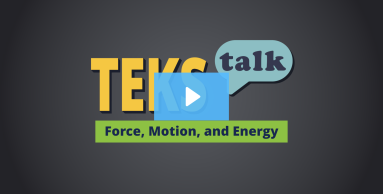
Knowledge and Skills Statement
The further explanation is designed to be a resource for educators that helps them better understand the topic their students are learning. Further explanations may be written at a more complex level than would be expected for students at the grade level.
Forces:
When two objects interact, each one exerts a force on the other. These forces can transfer energy between the objects. Forces between two objects at a distance are explained by force fields (gravitational, electric, or magnetic) between them.
When the forces acting on an object are balanced (are equal in all directions), the motion of the object does not change. When the forces acting on an object are unbalanced (unequal in one or more directions), the motion will change, for example, by changing speed or direction.
Research
Wilcox, Jesse, Naryah Moore, Sarah Nolting, Courtney Reyna, and Caitlyn Potter. "Don't Force It!: Using Guiding Questions to Scaffold Kindergartner’s Thinking of Pushes And Pulls." Science and Children 59, no. 2 (2021): 33-37. https://www.jstor.org/stable/27133371.
Summary: Teachers need to use questioning strategies, and this article gives examples of how to do so when teaching the concept of push and pull. It states that teachers should avoid using "yes" or "no" questions instead of focusing on using age-appropriate open-ended questions. Physical examples are important when presenting a push-and-pull activity, specifically using everyday examples, like children playing with sleds. Probing questions can help students predict what will happen and what will make an object move faster or slower. Teachers should have students predict what will happen if different variables are changed. Asking effective questions can help students generate ideas about force and motion.
